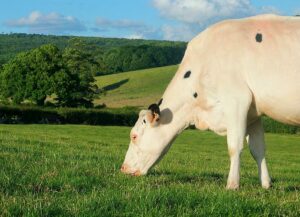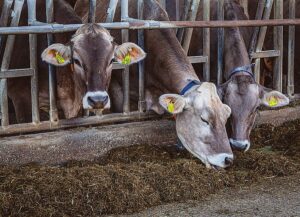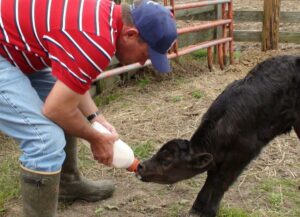Fernando Diaz
During the last 3 weeks of gestation, cow’s requirements for energy increase due to fetal development and colostrum production. At the same time, dry matter (DM) intake drops significantly during this period. This mismatch between nutrient intake and demand generates a negative energy balance towards the end of the pregnancy that is prolonged for several weeks after calving. Additionally, health problems during the transition period have a negative impact on the profitability of the operation due to increased veterinary expenses, reduced production, reduced reproduction performance, early culls, and deaths.
Despite increased research studying the transition period, these problems continue to manifest themselves and have even increased over the years. This increase is likely associated with the parallel genetic improvement and resulting milk production increase per cow. Recently, a study published in Animal Feed Science and Technology evaluated how a yeast supplement would affect milk production, blood metabolites, and body reserves of transition dairy cows during hot weather.
The researchers (Nasiri et al., 2019) fed 12 multiparous Holsteins from 21 days before expected parturition to 60 days in milk (DIM) with prepartum, fresh and lactating TMR diets without or with 4 g/head of a commercial live yeast supplement. The yeast product provided 15×109 cfu of Saccharomyces cerevisiae per gram. These were the main reported effects:
- Prepartum dry matter (DM) intake was greater in yeast-fed cows than in those receiving no yeast; however, this effect disappeared after parturition.
- Yeast supplementation increased yields of milk, fat-corrected-milk and energy-corrected milk by 1.4, 2.8, and 1.1 kg/day, respectively. Feeding yeast did not alter milk protein yield or concentration but improved milk fat production and content considerably. Compared with unsupplemented cows (1.12 kg/day; 3.16%), cows fed with the yeast product produced more milk fat (1.49 kg/day; 3.41%).
- Average body condition score (BCS) at calving was similar in both feeding groups (3.2); however, at 21 DIM, BCS declined more in unsupplemented cows (0.2 units) than in yeast-fed cows. At 42 DIM, BCS was similar in both groups of cows (2.9).
- Blood level of βHBA and NEFA, analyzed in samples collected the days –14, 0, 14, 28, and 60 relative to parturition, were not affected with additive supplementation.
In conclusion, yeast supplementation during hot weather improved DM intake during the prepartum period, and production performance during postpartum. Since average postpartum intake and BCS at 42 DIM were not altered with the supplement, it can be suggested that in this study live yeast increased the efficiency of nutrient utilization.
Reference
A.H. Nasiri, A. Towhidi, M. Shakeri, M. Zhandi, M. Dehghan-Banadaky, H.R. Pooyan, F. Sehati, F. Rostami, A. Karamzadeh, M. Khani, F. Ahmadi. 2019. Effects of saccharomyces cerevisiae supplementation on milk production, insulin sensitivity and immune response in transition dairy cows during hot season. Animal Feed Science and Technology. 251:112-123.
© 2019 Dairy Knowledge Center, LLC. All Rights Reserved.










